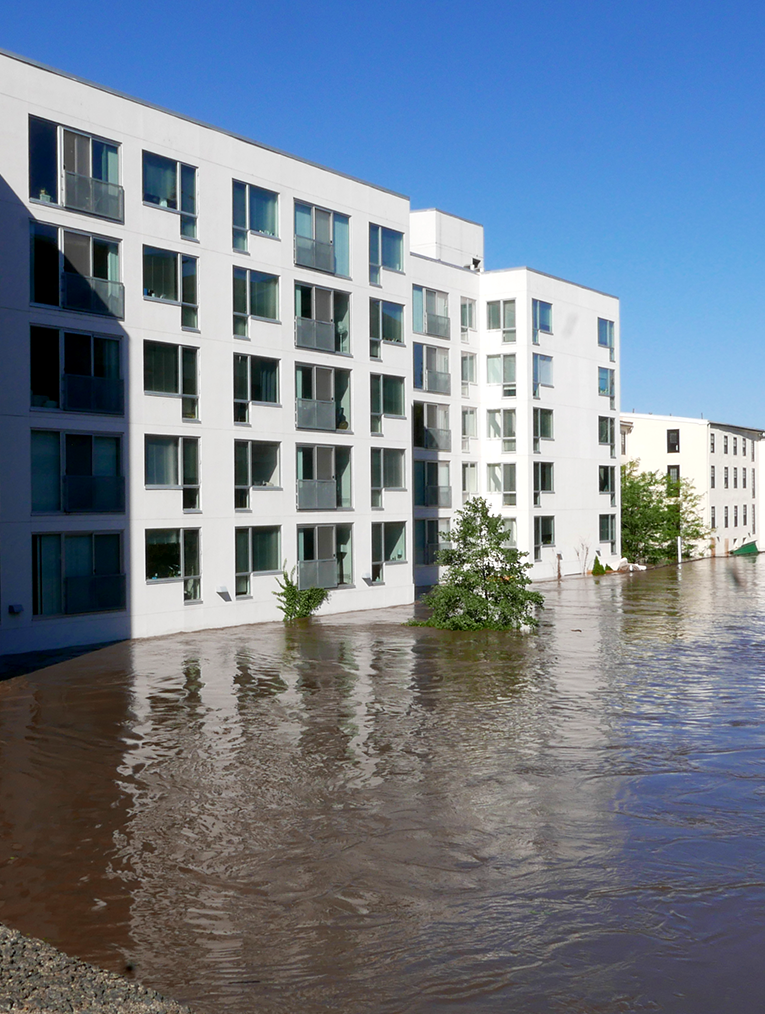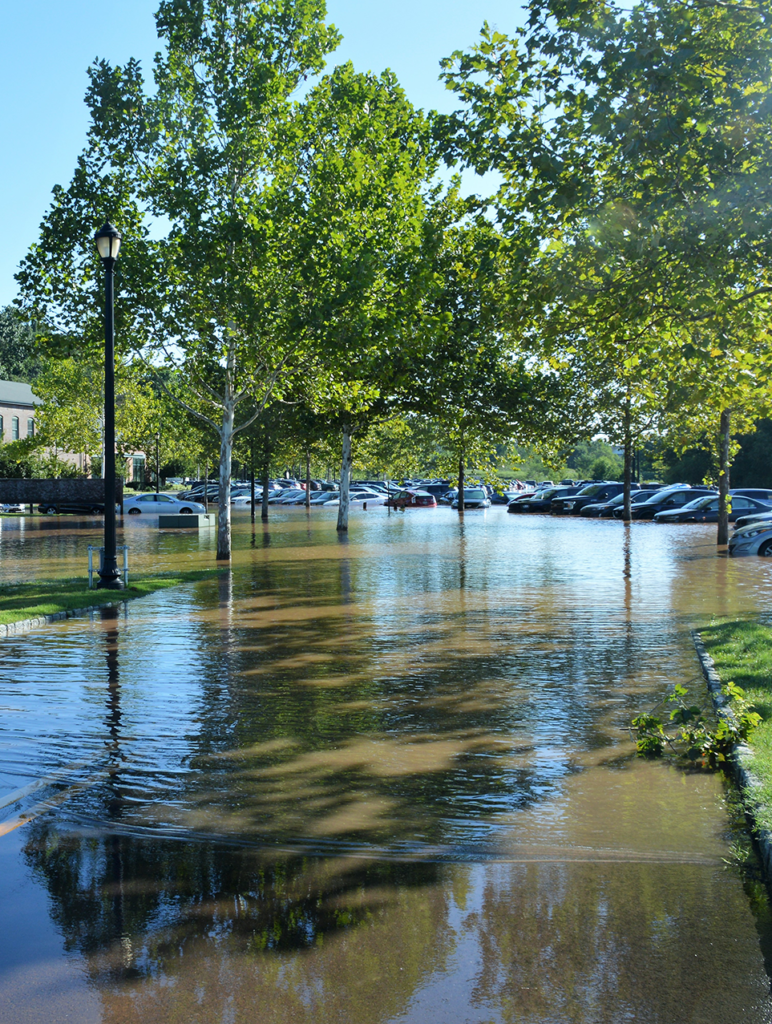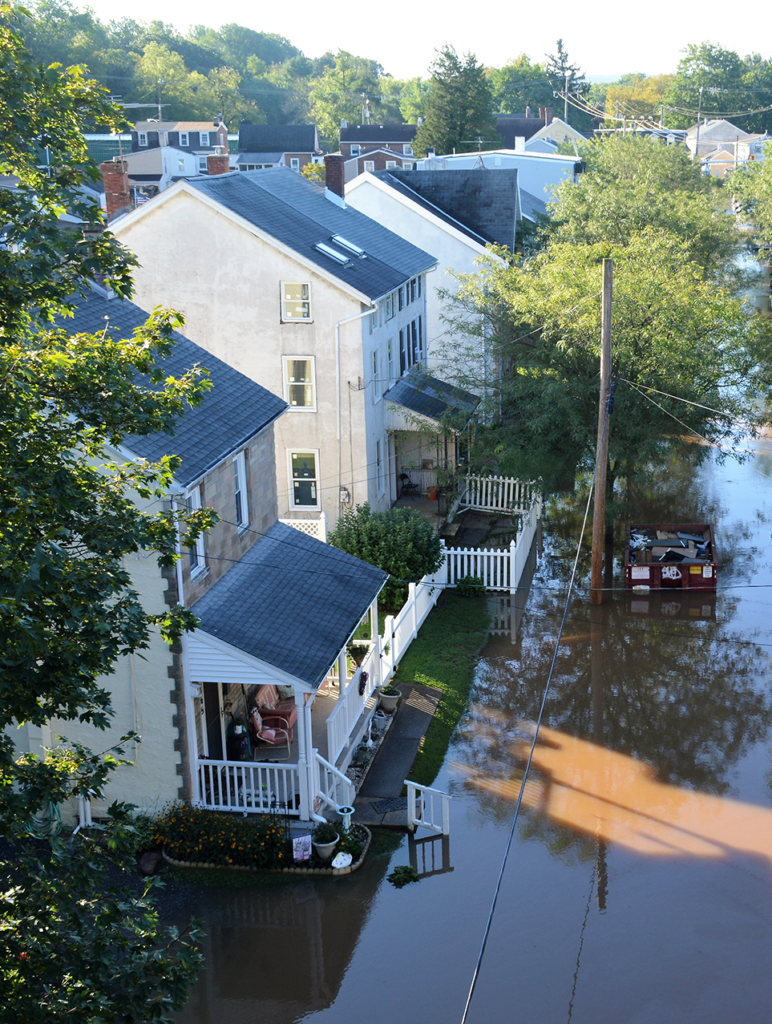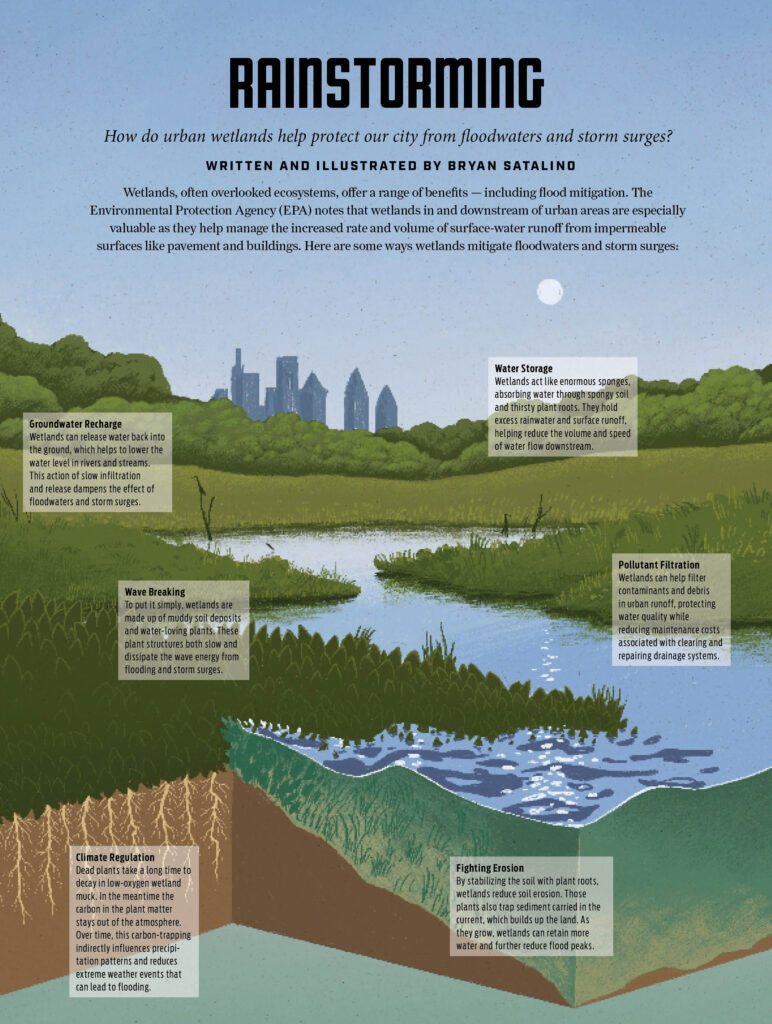A while back, I learned that Grid contributor Carolyn Kousky is a national expert on flood insurance, a topic I knew little about. I asked her to write a primer for our readers who, if they’re anything like me, could stand to learn something. When I read through her first draft, I learned that FEMA has a Community Rating System for flood insurance, and federal flood insurance policyholders can get discounts of up to 45% on their premiums if their communities take flood mitigation steps such as preserving open space and avoiding building in floodplains. I also learned that our City government has not yet chosen to participate in the program.
According to an official quoted in a WHYY article on the topic, Philadelphia could probably secure a 10 to 20% discount for residents based on existing practices and policies. They would likely need an extra staff person to spearhead the initiative, but it wouldn’t require any new measures. This would save policyholders a chunk of change and perhaps lower the cost of premiums enough to make insurance affordable for more people.
Qualifying for the 20 to 45% discount would require much more dramatic actions, such as buying out flood-prone properties and limiting development in floodplains. These common-sense measures, unfortunately, have little chance of happening in Philadelphia’s development-first culture.
If you’re new to Philly politics you might scratch your head and think that preventing construction where flooding is likely is a no-brainer. The same goes for not building in a floodplain, which, as Kyle Bagenstose explains in this issue, is bound to make flooding worse elsewhere. Preserving open space that soaks up precipitation and, close to the water, could buffer the impact of storm surges and swollen rivers also seems like a clear winner. All of these solutions could save the lives and property of Philadelphians, which is why FEMA encourages them. But powerful lobbies in Philadelphia — developers and the Philadelphia Building Trades — have other priorities.
Take a look at Venice Island, which sits in the Schuylkill River on the other side of the Manayunk Canal. It was an oft-flooded industrial area until about 20 years ago, when developers and City Councilmembers (including future-Mayor Michael Nutter) lobbied to reclassify the island from a floodway, where you cannot build, to a floodplain, where you can, and then rezoned it to allow apartments and row houses. In the process, they fought a lawsuit brought by neighbors opposing the development all the way to the Supreme Court of Pennsylvania. Those neighbors lost the suit but have been proven right in the worst way as floods have repeatedly required residents to be rescued from their windows by swift-water rescue teams. It is too easy to imagine a future flood when the boats don’t get there in time.
As one swift-water rescue expert put it back when developing Venice Island was still only a terrible idea: “Sooner or later someone is going to die down there.”
I’m not sure when our elected officials will stop allowing dangerous development, but for now we can start by educating ourselves. Check your current flood risk and buy the insurance you need. Next time you move, avoid high-risk properties. And contact your elected officials now to urge them to enact smart flood management, even if it means saying no to development.
![]()
Bernard Brown, Managing Editor









